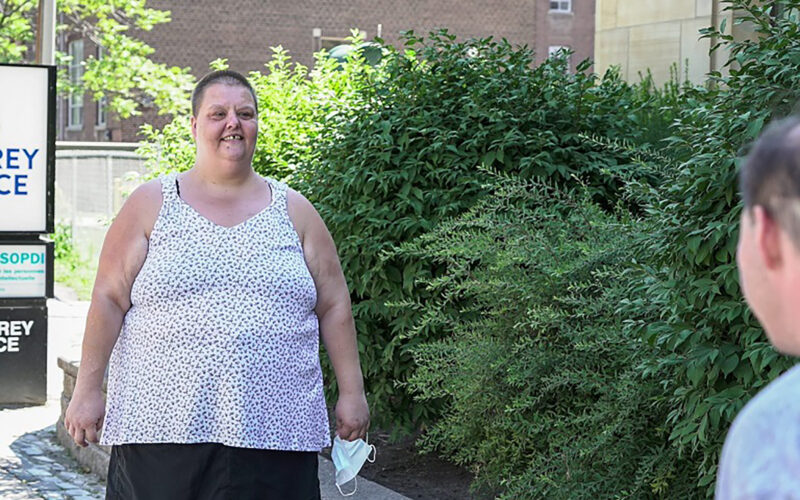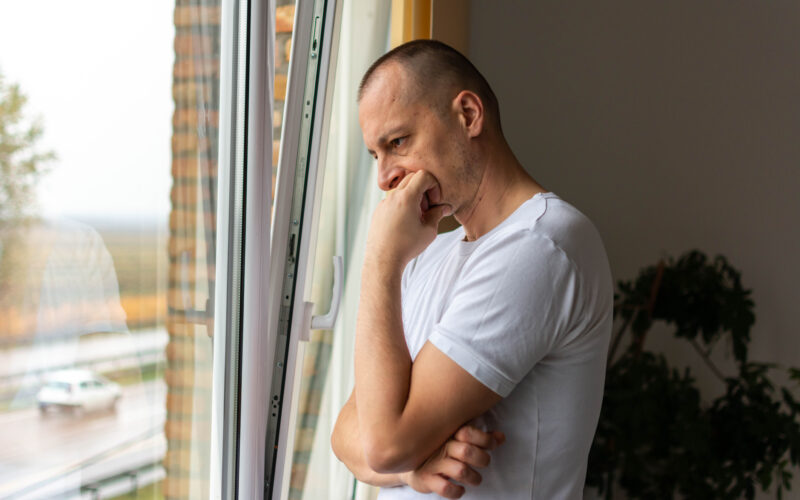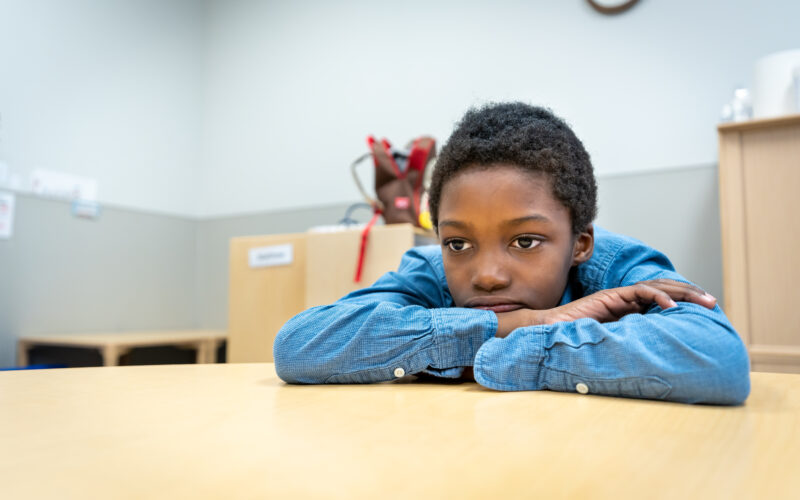Parents and caregivers of children and adults with developmental disabilities sometimes feel unsure about how to talk about gender and sexuality with their loved ones. We understand that these conversations can be challenging but we’re here to provide you with helpful information to create safe and empowering spaces for self-expression.
Understanding gender and sexuality
While gender and sexuality are often used together, it’s important to recognize that they are different.
Gender is a person’s relationship to words like “man” and “woman”. Some people identify with both or neither. It’s important to understand that gender is not the same as biological sex. Some people identify as cisgender, which means the gender they were assigned at birth corresponds with their sex. Others identify as transgender, which means their gender identity or gender expression differs from their sex assigned at birth. Additionally, you may have heard the term “gender expression.” This means dressing to look the way you feel in your heart and mind.
Sexuality is a person’s romantic and sexual orientation. This means being attracted to people of the same gender, a different gender or many genders. You may have heard the term 2SLGBTQ+. This refers to a range of sexualities that are not heterosexual and includes people who identify as two-spirit, lesbian, gay, bisexual, transgender, queer and questioning.
It’s important to remember that gender and sexuality are fluid concepts and people may change the way they identify over time.
Preparing to talk about gender and sexuality
Check your expectations. It’s possible that the beliefs you were taught about gender and sexuality while growing up are different from what you are learning now. It’s completely understandable if you feel uncomfortable talking about these subjects. The most important thing is to stay curious, compassionate and open to change.
Educate yourself. Learn more about gender and the history of 2SLGBTQ+ people. With your child, explore books movies and TV shows that have characters with diverse gender and sexual identities. Look for resources online and reach out for help in your community. At the end of the article, you’ll find some helpful links to get you started.
It’s an ongoing conversation. You don’t need to have one “big talk” about gender and sexuality with your loved one. In fact, it’s often best to have many shorter conversations over the course of many years as your child grows and develops.
Embrace imperfection. You don’t have to cover everything all at once. It’s okay to say you don’t have an answer to a question. You can do research with your child and discover new things together!
Lead by example. Your child looks to you as an example of how to speak about gender and sexuality. Use respectful language and don’t assume people’s sexual orientation or gender identity.
How to talk about gender
Sometimes it can seem like gender is the most important fact about a person, from the moment they are born. But this belief can be harmful. It can make people feel like they need to make decisions and express themselves in gendered ways that feel unnatural.
It’s not all about gender. Instead of focusing on gender, focus on your child’s personality, interests and self-expression. Who are they as a person? What makes them happy?
Encourage choice. Children and adults with developmental disabilities sometimes feel like their choices are limited. Invite your child to choose what they wear, how they style their hair and what pronouns they want to use.
Respect pronouns. Pronouns are words we use to refer to each other, such as she/her, he/him and they/them. If you’re unsure about someone’s pronouns, ask them. If you use the wrong pronoun, it’s okay! Apologize, correct your mistake and move forward.
When uncertain, use “they/them.” Remember you can’t determine somebody’s gender just by looking at them. If you’re not sure, use the gender-neutral pronoun “they/them.” This is a singular all-inclusive pronoun that can be used to describe anybody.
How to talk about sexuality
Sexuality is often associated with sexual activity, but parents and caregivers can have meaningful conversations with their children without focusing on sex. These conversations can enhance your child’s confidence, self-awareness and personal safety.
Talk about the body. Teach your child the medical terms for their anatomy early on. Teach them the difference between public and private body parts and behaviours. This can help them understand what kind of touching is and is not appropriate, which can help them respect other people’s boundaries and feel empowered to speak up if their own are crossed.
Model consent. Don’t force your child to hug everyone and teach them to check in with people before touching them. At medical check-ups, involve your child by asking the doctor to explain what the appointment is about, and what parts of your child’s body will be examined.
Meet them where they’re at
Consider your child’s age. Keep conversations in line with your child’s age and understanding, using language they will understand. Let your child take the lead and ask questions while maintaining a friendly and open atmosphere.
Assess what they understand. Try to see through your child’s eyes by asking questions. For example, what do they know already? When they see someone wearing “women’s clothing,” what do they think? Do they know anyone who identifies as queer?
If you’re looking for some guidance on what topics to cover at different stages of development, Ontario’s sexual health curriculum can be a good reference point.
Questions that may come up
Many questions may arise as you keep checking in with your child about gender and sexuality. Here are some common ones, and how you might answer them.
How do I know what gender I am? Your gender identity can change and is totally up to you. Explore what feels right. Try on different clothes, hairstyles and pronouns. The goal is to be comfortable in the way you look and feel.
How do I know my sexuality? Just like gender, this can change and is up to you. Take your time and be gentle with yourself. You can try different labels, or no labels at all.
Why are some people mean to 2SLGBTQ+ people? Unfortunately, there are still some people who are violent towards others because of their gender or sexuality. Often, it is because they feel uncomfortable with different viewpoints on identity and express their discomfort as aggression.
Information is power. The more we talk to each other about gender and sexuality, the more acceptance we bring into our communities. Together, we can create a warm, compassionate world where everyone is free to be who they are.
What to expect
Your child may not want to talk to you. Teenagers and young adults may not be comfortable discussing gender and sexuality with their parents or guardians. That’s perfectly normal! Suggest a trusted friend or family member as their go-to person for this. You can also seek help from a medical professional, a teacher, a social worker or other supportive people in your community.
You need support too. As a parent, having a safe space to express your own doubts and fears can help you better support your child. Check out parent groups in your area and take advantage of resources available through community centers like The 519.
Resources
To learn more about gender and sexuality in Toronto and the GTA, here are some great resources available:
The 519 is a community organization located in downtown Toronto that’s dedicated to supporting 2SLGBTQ+ individuals. They offer educational programs, support services, and serve as a safe space and information hub.
Sherbourne Health Clinic provides primary care and a range of services, with a focus on supporting 2SLGBTQ+ people.
Hassle Free Clinic is a community-based clinic that provides medical and counselling services, with an emphasis on sexual health.
Toronto Pride is an organization that hosts an annual festival in June celebrating and advocating for the rights of 2SLGBTQ+ people.
Surrey Place prioritizes inclusion and accessibility across all our programming. We proudly support the 2SLGBTQ+ community and their ongoing efforts to create and maintain safe spaces.


